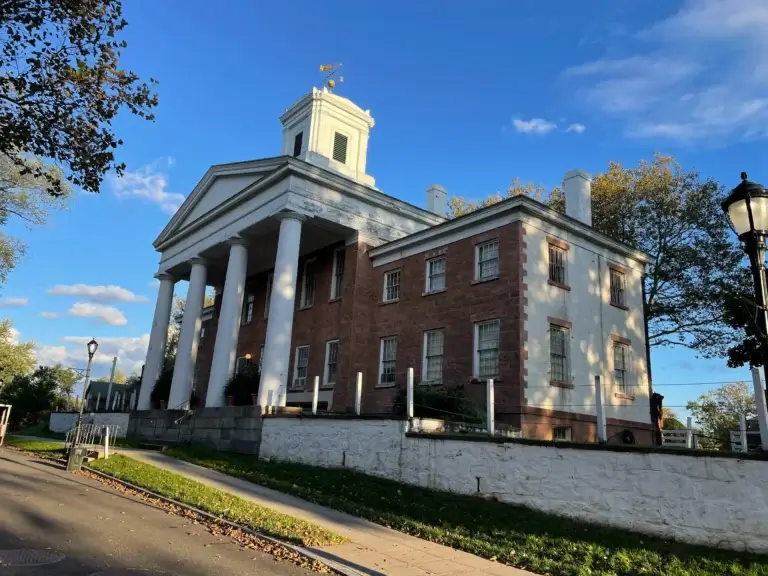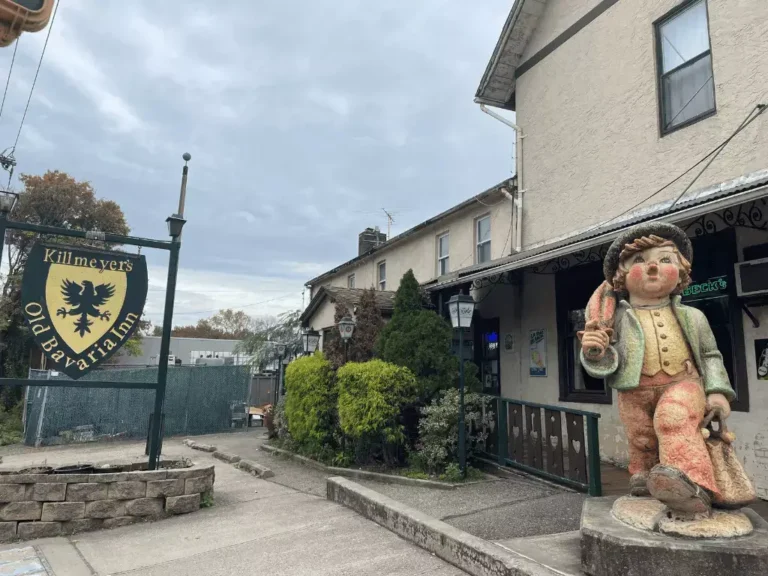Oakwood, Staten Island: Big City Accessibility, Small Town Allure
Oakwood is a neighborhood situated in east central Staten Island and is located near the South Shore. It is bordered by Tysens Lane to the north, the Atlantic Ocean to the south, Great Kills Park to the west, Kensico Street to the east, and Clarke Avenue. Oakwood has a rich history and was once a thriving resort town, with landmarks like the Oakwood Park Hotel, which later became the Elks Clubhouse and remained open until 1942. In recent years, Oakwood has witnessed changes and developments, making it a noteworthy neighborhood on Staten Island. This hidden gem offers residents a unique blend of small-town feel, natural beauty, and accessibility to New York City.
At first glance, Oakwood may seem like your typical quiet New York suburb. But beyond its neat rows of single-family homes and peaceful ambiance lies a vibrant community with plenty to offer residents. The neighborhood strikes a comfortable balance between its bucolic setting and proximity to urban amenities.
Oakwood is a highly regarded neighborhood known for its safety and predominantly middle to upper-middle-class demographic. One notable feature is the NetCost Russian market situated on Clark and Amboy, providing residents with a unique shopping experience. Hylan Plaza, in close proximity, offers a variety of shopping and dining options, while the Alamo Drafthouse movie theater stands out as a popular entertainment choice.
Furthermore, Oakwood’s proximity to “the boulevard” adds to its appeal, with attractions like the Alamo Drafthouse, ShopRite, LA Fitness, Ulta, and various other shops just a short distance away.
Some of Oakwood’s main highlights include its family-friendly vibe, good public schools, historic sites, abundant parks and outdoor spaces, and easy transportation into Manhattan. Homebuyers can find an appealing selection of housing from colonials and ranches to garden-style apartments.
Map of Oakwood, Staten Island
History of Oakwood
Oakwood has a long and storied history spanning over 350 years. Oakwood’s history reflects growth and change on Staten Island, showing its enduring spirit.
Early Settlement and Founding
The land that is now Oakwood was originally home to Native American tribes, including the Lenape, who inhabited Staten Island and the surrounding area. In the late 17th century, European settlement of the island began in earnest.
In 1668, Francis Lovelace became the second colonial governor of New York. That same year, he granted a large parcel of land to French settler Jacques Guyon, who built a mansion there. This estate eventually became known as “Oakwood” due to the abundant oak trees in the area. Guyon Avenue in modern-day Oakwood bears his name.
Other prominent 18th century families like the Lake, Taylor, and Dongan families also owned and farmed acreage in the future neighborhood. Throughout the 1700s, Oakwood remained a lightly populated agricultural area focused on farming and oyster harvesting.
Growth as a Resort Town
By the late 19th century, Staten Island’s natural beauty and oceanside location began attracting vacationers. In the early 1900s, the Oakwood Park Hotel opened at the corner of Amboy Road and Clarke Avenue, offering beachfront rooms and amenities to urban tourists.
The hotel remained a popular summertime destination until the 1920s. In 1942, the venue closed and was later demolished to make way for a shopping plaza. But Oakwood’s resort era left a lasting mark, with some of the original beach bungalows still dotting the shoreline.
Suburbanization and Development
After World War II, Oakwood transitioned from a seasonal resort to a full-time suburban community. Transportation improvements in the mid-20th century accelerated this change. The opening of the Verrazano-Narrows Bridge in 1964 enabled rapid suburban growth, as more New Yorkers could now easily commute to and from Staten Island.
Previously farmland and woodlands were quickly transformed into orderly subdivisions and suburban amenities. Today, Oakwood retains traces of its rich past while meeting the needs of 21st century life. The neighborhood’s evolution reflects broader trends of suburbanization and development in NYC’s outer boroughs.
Transportation and Accessibility
One of Oakwood’s standout features is its convenience and connectivity for residents. The neighborhood enjoys excellent public transportation access as well as proximity to highways and bridges.
For convenient commuting, the Oakwood train station provides a quick and cost-free route to New Dorp, a neighboring area with abundant shopping and dining opportunities. Express buses along Hylan Boulevard and the nearby hit-or-miss railroad on Guyon Avenue and Railroad Avenue (primarily on weekends) are additional transportation options. When operational, the railroad tends to adhere to a reliable schedule, making it a convenient choice, especially for those within walking distance.
Public Transportation
The Staten Island Railway station in Oakwood provides residents with easy train access to other parts of Staten Island as well as convenient ferry connections to Manhattan. The SIR train takes around 30 minutes to get to the ferry terminal in St. George.
In addition to the railway, Oakwood is served by several local and express buses including the S57, S78, S79, and SIM express buses. These MTA bus routes connect Oakwood to other Staten Island neighborhoods and business districts.
Highways and Bridges
Living in Oakwood provides easy access to the Verrazano-Narrows Bridge, the gateway connecting Staten Island to the rest of New York City. Residents can be in Brooklyn in under 15 minutes. The bridge entrance is around 3 miles southwest of Oakwood.
For drivers, Oakwood offers convenient proximity to the Jersey Shore and access to major highways like the New Jersey Turnpike, Garden State Parkway, and Route 440. The Outerbridge Crossing bridge to Perth Amboy, New Jersey is only a 15-minute drive away.
Walkability
Within Oakwood itself, the neighborhood is pleasantly walkable. Tree-lined streets and well-maintained sidewalks make it easy for residents to get around on foot. Parks and beaches are within close walking distance in most parts of the neighborhood.
With its public transit connections, highway access, and pedestrian-friendly streets, Oakwood earns high marks for transportation and accessibility. This convenience adds to its desirability for commuters and families alike.
Real Estate and Lifestyle
Oakwood offers homebuyers a range of housing options paired with a family-friendly lifestyle. Architecturally, Oakwood has an orderly suburban feel with neat rows of similarly styled homes. The area saw rapid development and suburbanization after the 1964 opening of the Verrazano Bridge.
Housing Stock and Values
The housing stock in Oakwood includes a mix of single-family homes, two-family homes, garden style apartments, and condominiums. Many of the single-family residences are post-1965 colonials and ranches on orderly, tree-lined streets.
Home values in Oakwood tend to be more affordable than in other parts of New York City, while still offering proximity to Manhattan. The median home value in the neighborhood is around $565,000. Values range from $300,000 for a modest Cape Cod to $900,000+ for larger colonials and custom-built homes.
New townhome developments are also bringing sleek, modern options to the local real estate market. Compared to other NYC suburbs, Oakwood remains a relatively good value for homebuyers.
Family-Friendly Vibe
Oakwood offers a relaxed suburban feel that appeals to families. The neighborhood is known for having low crime rates, good schools, and family-oriented amenities like parks, playgrounds, and recreation centers.
Residents describe Oakwood as having a strong sense of community where people know and look out for one another. The neighborhood is seen as a safe, stable environment for raising children.
Amenities and Lifestyle
Despite its tranquil setting, Oakwood offers plenty of amenities right in the neighborhood. Residents have walkable access to grocery stores, restaurants, houses of worship, and everyday conveniences along Hylan Boulevard. The neighborhood is a microcosm offering many features of suburban life.
Leisure time can be spent strolling around Lakeside, visiting the shoreline parks and beaches, and enjoying the natural surroundings. For commuters, Oakwood provides the perks of suburbia with easy transportation access into Manhattan.
Parks and Outdoor Spaces
Some of the neighborhood’s key outdoor spaces include:
Amundsen Circle – Landscaped traffic circle with trails and a stone monument to explorer Roald Amundsen.
Frederick Douglass Memorial Park – African American cemetery and burial grounds with gardens.
Beaches – Shoreline parks and beaches along Lower New York Bay and Raritan Bay. Oakwood Beach and Cedar Grove Beach offer residents scenic walking paths overlooking the waterfront. The beaches are more natural with native plants and wetland areas.
Schools and Institutions
Oakwood has several local schools and community institutions:
- Public schools – P.S. 50, I.S. 24, New Dorp High School.
- Private schools – Monsignor Farrell High School, Eden II School.
- Houses of worship – Oakwood Heights Community Church, Congregation Toras Emes of Staten Island.
The neighborhood is known for having quality public schools and enrichment opportunities for families.
Conclusion
Oakwood combines small-town charm with easy access to the city. Located on Staten Island’s peaceful east shore, it offers a suburban lifestyle just minutes from Manhattan. Oakwood has a rich history of over 350 years but is also modern in its amenities. The neighborhood strikes a good balance between its peaceful setting and proximity to the city, making it suitable for families, commuters, nature lovers, history enthusiasts, and more.







